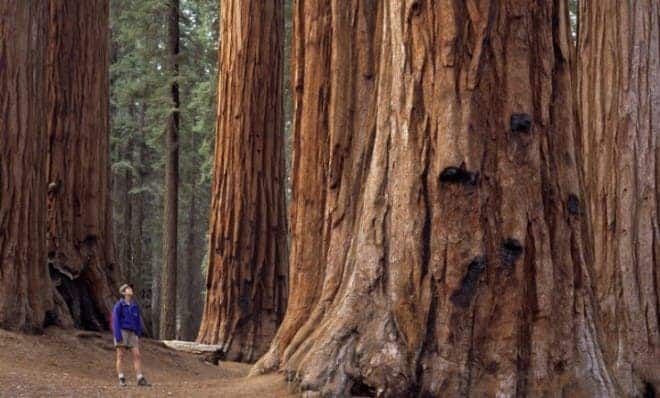California’s large trees or those larger than two feet in diameter have declined in numbers to half those recorded in a 1930 census, according to a study published in Proceedings of the National Academy of Sciences. The leading cause of the demise is thought to be rising surface temperatures which but high stress on large trees, along with water shortages. Pines are particularly vulnerable, while oaks seem to flourish and gain terrain. It seems like the state’s wetlands and forests will be dominated by bushy vegetation and densely packed small trees, as large trees will find it ever harder to survive a warming climate.
The giants are dying

According to Patrick McIntyre, an ecologist at the state Department of Fish and Wildlife who was the lead author of the study, there are many factors that have contributed to this disheartening situation. Big trees are particularly susceptible to logging being easier to cut down and transport, thus being the cheapest to exploit weight per weight. Real estate has long expanded into the woods, while over zealous fire suppression has seen small trees crowd Californian forests competing for resources with the larger ones. Yet the trees’ biggest enemy is climate change.
“Older, larger trees are declining because of disease, drought, logging, and other factors, but what stands out is that this decline is statewide,” explains study leader Patrick McIntyre. The manager of biodiversity data with the California Department of Fish and Wildlife continues, “Forests are becoming dominated by smaller, more densely packed trees, and oaks are becoming more dominant as pines decline.”
He goes on to say, “The current drought in California highlights our need to understand the role of water balance in these systems and how it will be affected by global temperature rise. Forests and woodlands cover a third of California, so this has important implications for our state.”
Speaking of the Californian drought which has ravaged the state for the past four years, the study’s findings didn’t even measure its results. That’s because McIntyre and colleagues made their research by comparing a census of California forests done in the 1920s and 1930s with another survey between 2001 and 2010, right before the drought began. With this in mind, the results are even more discouraging since presently the reality must be worse.
Indeed, lack of water seems to be the prime driver for California’s big tree decline. Computer models were used to calculate how much water big trees needed versus how much they were actually getting, considering precipitation, air temperature, soil moisture, and the timing of snowmelt. Those areas where the biggest tree loss were reported coincided with those with the greatest water deficit.
Because of rising surface temperatures, trees lose more water to the atmosphere, while early snowmelt reduces the water available during the dry season. Of course, the water shortage affects all trees, but large trees even more so. Because they’re taller, the internal hydraulic system that pumps water and nutrients up through the tree is more susceptible to failure when out of enough water. There’s also a hypothesis that given the most large trees sprouted centuries ago during a colder climate, it’s possible that they find it harder to adapt.
Throughout the state, the most severe declines were among pine trees, including ponderosa, sugar, and Jeffrey pines. Their place has been taken by trees smaller than a foot across, which have surged across the state. Oaks are an increasing presence in the Sierras and along the north coast, while declining slightly in southern California.
While large trees are indeed being replaced, their rapid downfall as well as their unique ecological role still makes this sound like a disaster. Large trees store more carbon that their smaller shrubby brethren, and provide homes for animals like spotted owls and flying squirrels.
Hyperion located in Redwoods, California, is the tallest tree in the world measuring 115.61 meters high and 4.84 meters in diameter. It’s between 700 and 800 years old and belongs to the Sequoia sempervirens species. As an interesting fact all of the top ten tallest trees in the world are in California, and four out of the top five trees are in Redwoods. The study doesn’t say anything about sequoias and redwoods, California’s trademark giants.






